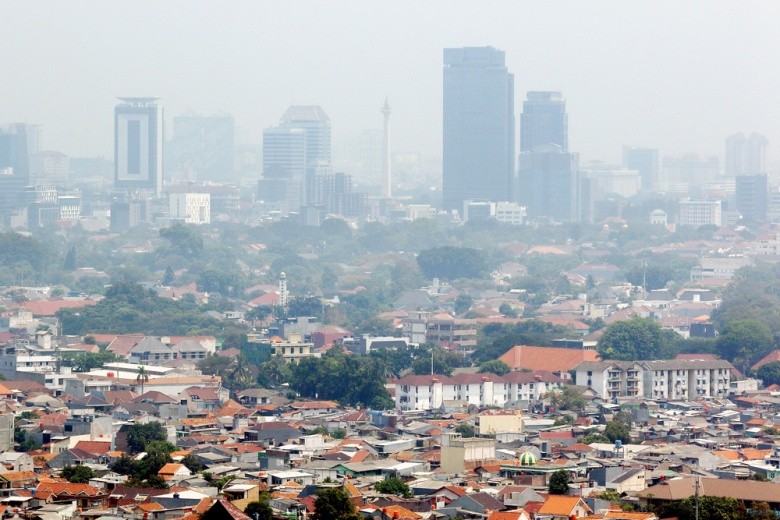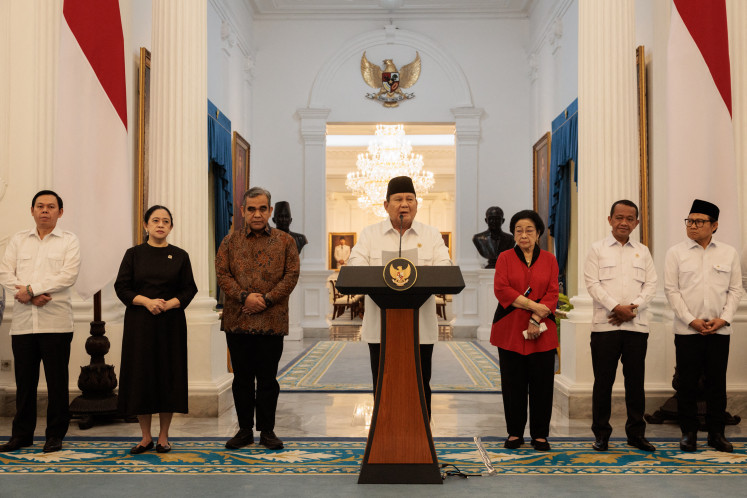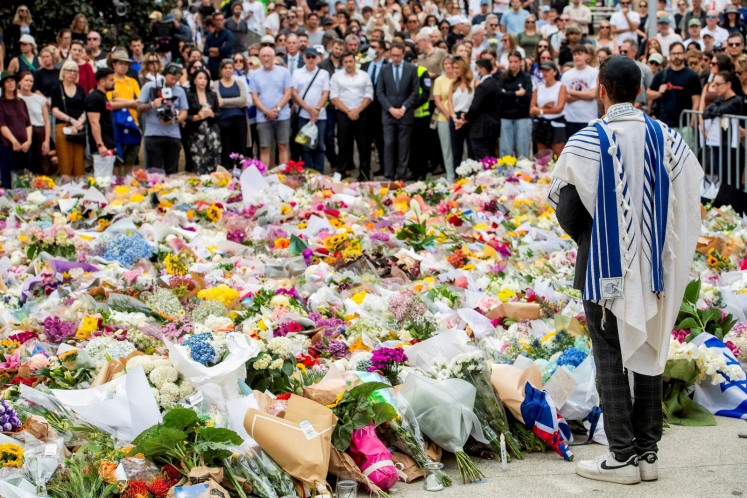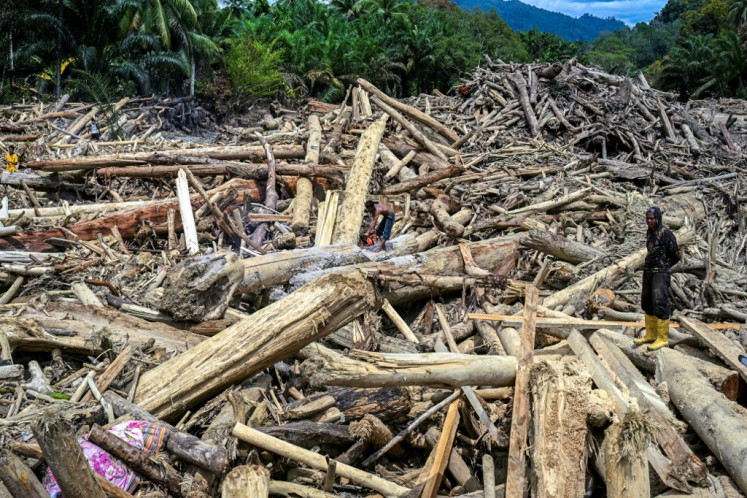Popular Reads
Top Results
Can't find what you're looking for?
View all search resultsPopular Reads
Top Results
Can't find what you're looking for?
View all search resultsAn Indonesian green new deal
The Green New Deal aims to dramatically reduce greenhouse gas emissions, create high-paying jobs, ensure that clean air, clean water and healthy food are available as basic human rights and end all forms of oppression.
Change text size
Gift Premium Articles
to Anyone
“Climate crisis” was one of the statements on the many placards observed at a climate strike in Jakarta on Sept. 20. The nationwide climate strike was held in 12 cities across the country on that date as part of the Global Climate Strike.
Prominent Swedish teenage climate activist Greta Thunberg has said that if it is a crisis, we need to treat it as a crisis. She continued with an analogy: Our house is on fire, stop acting as if it is not.
Indonesia has literally been on fire in the past months, striking its forests and peatland. These fires emit greenhouse gases that exacerbate the climate crisis.
To deal with the forest fires and climate crisis in a more systematic and structural way, Indonesia is implementing a “first of its kind” policy, known as Low Carbon Development Initiative (LCDI). Putting a stop to forest fires requires addressing their root cause, including making sustainable land-based investments possible. The LCDI provides an approach and concept on low carbon and sustainable development programs and investment, capable of advancing economic growth while increasing people’s welfare and preserving the environment.
In the book On Fire: The (Burning) Case for a Green New Deal, author Naomi Klein explains the rationale for the Green New Deal, an emerging climate action agenda in the United States, as an all-out systematic and structural way of tackling the climate crisis. Originally conceived in 2008 in London by a group of economists and environmentalists, the Green New Deal draws inspiration from the New Deal, US then-president Franklin Roosevelt’s all-encompassing stimulus package to counter the effects of the Great Depression and reform the financial market.
The Green New Deal calls for the launch of a “10-year mobilization” to reduce carbon emissions in the US by proposing a set of economic and social programs. It envisions sourcing 100 percent of the country’s electricity from renewable and zero-emissions power, digitizing the nation’s power grid, upgrading every building in the country to be more energy-efficient and overhauling the nation’s transportation system by investing in electric vehicles and high-speed rail.
The Green New Deal aims to dramatically reduce greenhouse gas emissions, create high-paying jobs, ensure that clean air, clean water and healthy food are available as basic human rights and end all forms of oppression. The Green New Deal has become a call for real systematic and coordinated action to tackle both the climate crisis and inequality issues, a critical plan amid the relatively short period of time to limit global temperature rises below 1.5 degrees Celsius by 2030.
At the global level, United Nations Conference on Trade and Development (UNCTAD) secretary-general Mukhisa Kituyi said that reining in the heating of the planet “requires rebuilding multilateralism around the idea of a global Green New Deal, and pursuing a financial future very different from the recent past”.
The LCDI may be the precursor of the Indonesian Green New Deal. The LCDI report, launched by the Indonesian government in March this year, proposes three low carbon development scenarios based on systems dynamics modeling: the LCDI moderate scenario, the LCDI high scenario and the LCDI-plus scenario. The latter is the most ambitious one that could bring Indonesia’s full contribution to global emissions reduction in limiting global temperature rises to below 1.5 degrees by 2030. A Green New Deal level scheme will need to have a 10-year horizon, while the LCDI-plus scenario has been touted as a long-term 25-year strategy toward “Golden Indonesia 2045”.
Several development policies of a Green New Deal level of ambition in the LCDI include: (1) the introduction of mechanisms to put a price on carbon that are representative of its social cost and of externalities associated with carbon emissions; (2) no-deforestation, total conservation and massive reforestation; (3) energy transition to renewables, retirement of coal-based power generation and higher improvement in energy efficiency; (4) zero-carbon transportation systems; and (5) full-scale revamping of food and waste systems.
A new low-carbon economy for Indonesia will emerge from these policies, but the policies have to be implemented in a way that is compatible with a just transition. Indonesia needs to support the people and communities with new capabilities to participate in and benefit from the new low-carbon economy.
Does Indonesia have the right ecosystem to formulate and implement its ambitious climate targets as its Green New Deal?
Definitely. A steep 40 percent decline in the deforestation rate in 2018 compared to the average annual rate of loss between 2002 and 2016 is an example of Indonesia’s willingness to drive the country to a low-carbon development pathway. A declaration of Bali as a clean energy province by 2025, followed by strong collaboration with and support from state electricity company PLN, is another example that may well become a great precedent for energy transition.
President Joko "Jokowi" Widodo’s instruction to his newly reappointed Forestry and Environment Minister Siti Nurbaya Bakar to facilitate the development of a carbon trading scheme in the next five years during his second term is a move toward carbon pricing.
Indonesia's Green New Deal is a feasible dream. An initial step would be to adopt the LCDI-plus scenario as a pathway for the 2020-2024 National Mid-Term Development Plan. This step should be translated into a more ambitious Nationally Determined Contribution in 2020 as part of Indonesia’s commitment to the Paris Agreement.
***
Director of World Resources Institute Indonesia











